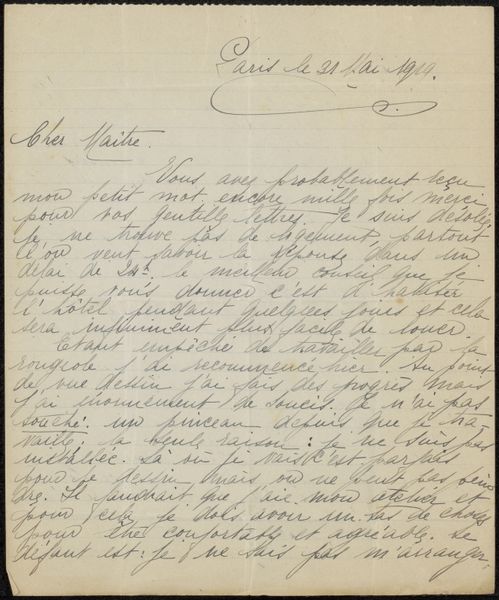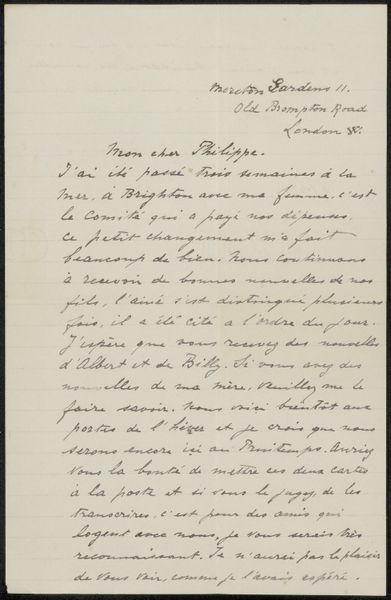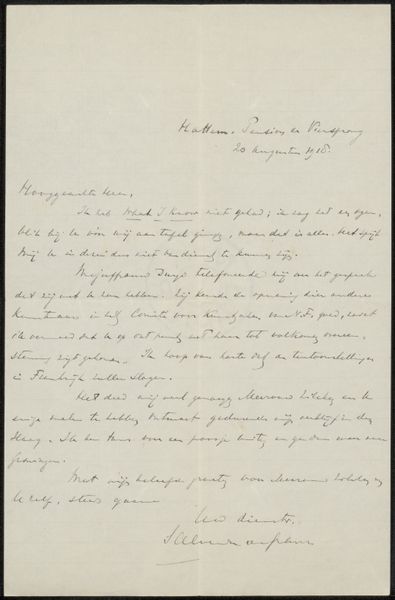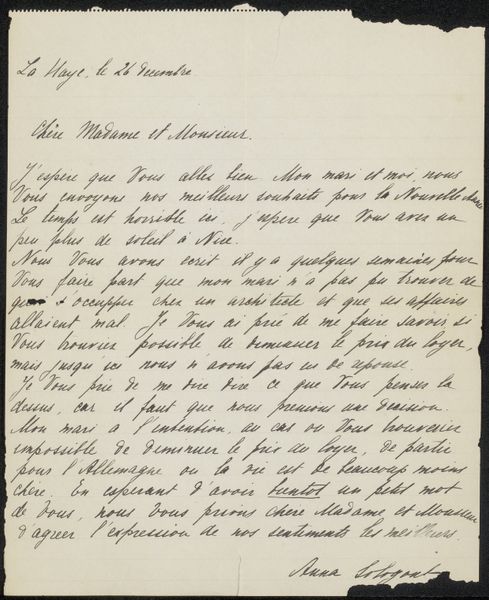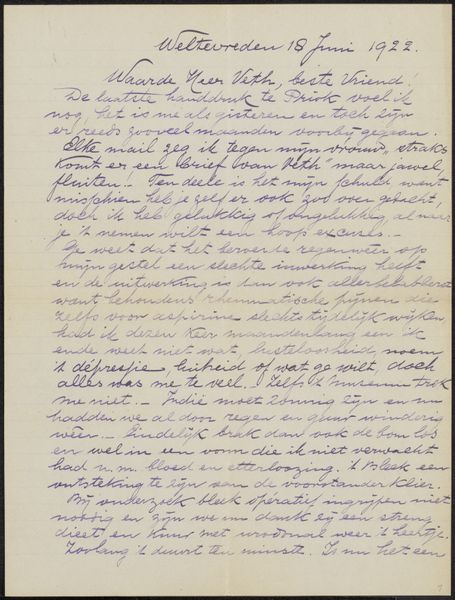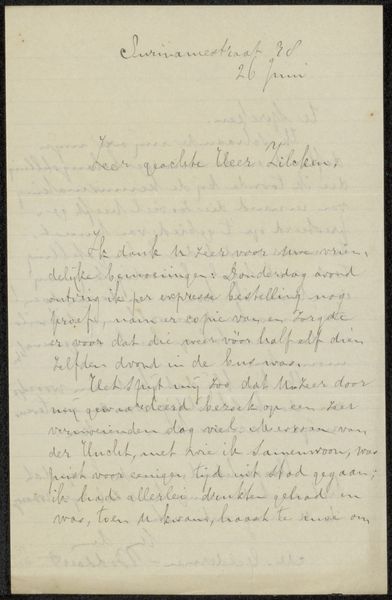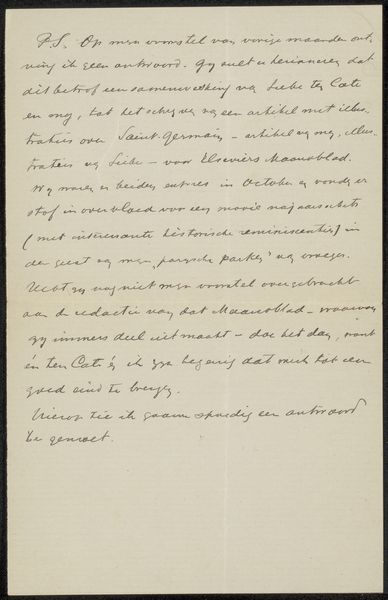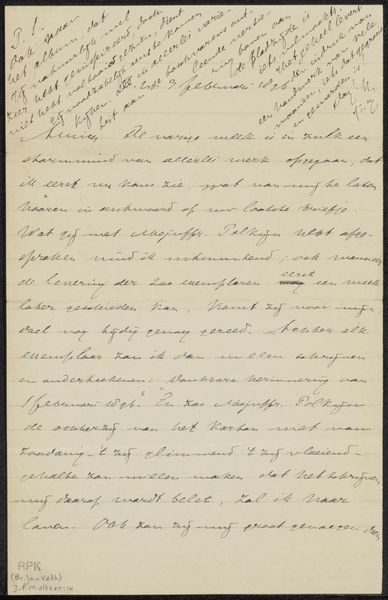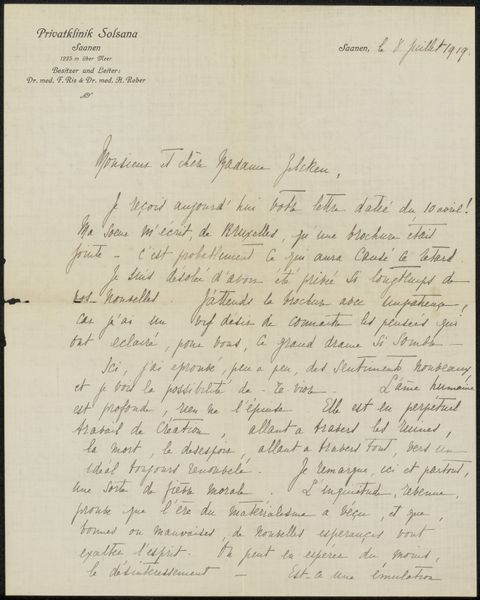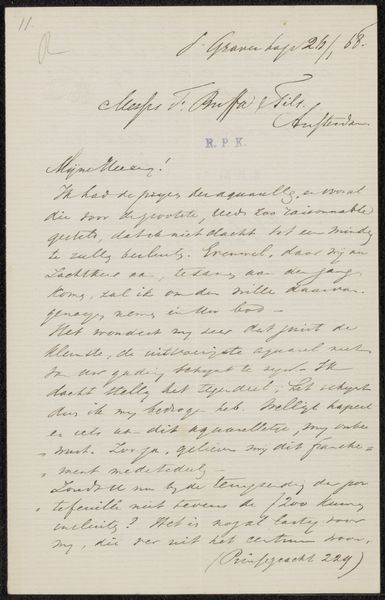
drawing, paper, ink, pen
#
drawing
#
aged paper
#
hand-lettering
#
old engraving style
#
hand drawn type
#
paper
#
personal sketchbook
#
ink
#
hand-drawn typeface
#
intimism
#
pen-ink sketch
#
pen work
#
sketchbook drawing
#
pen
#
sketchbook art
Copyright: Rijks Museum: Open Domain
Curator: This document, likely dating to 1895, titled “Brief aan Philip Zilcken en mevrouw Hauzeur” – a letter to Philip Zilcken and Mrs. Hauzeur, catches my eye with its intimate tone and handwritten script. What’s your first impression? Editor: It's like stumbling upon a deeply personal artifact. I find the aged paper and flowing script so evocative. It feels like a direct line to the emotions of the writer. How do you read the artistic intention behind a piece like this? It’s not exactly painting or sculpture. Curator: Indeed. As a historian, I see this as a powerful social document. The handwriting itself, the visible pressure of the pen, conveys immediacy and vulnerability. The choice of language, seemingly unedited, hints at a close relationship between the writer and the recipients. Editor: Do you think the imperfections—the blots and scratches—add to its authenticity? Curator: Absolutely. Those elements break down the traditional hierarchy between artist and viewer. We're not presented with a polished performance, but with raw emotion. This connects to the late 19th century interest in Intimism, capturing candid moments of daily life. Think about who was writing letters and who was receiving them - who had access to literacy and free time and how that fits into society then? Editor: So, it's less about aesthetic beauty and more about social and emotional accessibility? Curator: Precisely. It questions the role of art as solely a visual spectacle, instead, transforming it into a vessel for human connection and a record of personal experience. It also prompts us to consider how social conventions shape the creation and interpretation of art, even in its most personal forms. Editor: This has completely changed my understanding of this work. I see it now not just as a historical relic but as a testament to the power of human connection. Curator: And for me, it's a reminder that even in everyday objects, like a handwritten letter, we can find reflections of broader social and cultural narratives. It underscores how the personal is always, in some way, political.
Comments
No comments
Be the first to comment and join the conversation on the ultimate creative platform.
